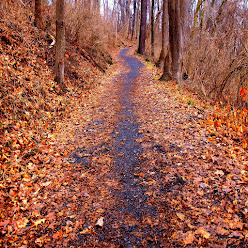As you might guess, or know firsthand, independent publishing has its disadvantages, including the marketing and distribution of authors’ books. These stark realities became even more evident when on March 28 Small Press Distribution, one of the last remaining independent book distributors in the US, suddenly announced its closure. Thankfully, organizations like the Community of Literary Magazines and Presses stepped in to help independent presses (and authors) get the information they needed to help fill the void left by SPD.
To hear our RIFF filmmakers tell it, they face similar issues. Obstacles range from raising money to securing production staff and equipment, to finding venues, locations and the right actors to play the parts. And all of this is happening while most filmmakers are also writing, directing and producing their own original material. If the challenges of independent filmmaking sound familiar, they should. Writers working with independent publishers face similar obstacles, including marketing their work and getting (and keeping) it before the public. Indie filmmakers face these hurdles, too, underscoring the importance of film festivals like RIFF and book festivals like those of the Connecticut Authors and Publishers Association.
So why do indie creatives still put themselves through such wringers?
In the case of indie authors, some have tried the traditional route and either found no room for their work or found the terms set by traditional publishing too stringent. But now, given today’s publishing climate, more authors are making the indie route their first choice. (If you haven’t seen the Oscar-nominated film American Fiction, I’d suggest it.) Indie authors feel they have the talent, stories and entrepreneurial spirit needed to face such efforts. Moreover, they like the freedom of working with independent publishers, who often have the same mindset.
Of all the benefits of an independent route, RIFF filmmakers cited storytelling as the main reason why they feel indie works best. They have stories they believe should be told and feel that, in the end (and the beginning), they’re the best ones to tell those stories. The flip side of the indie coin is that these filmmakers also like collaboration. They enjoy working with editors, sound experts and other industry professionals, because each of these people brings their unique expertise to the table to help shape the filmmakers’ vision for their projects. In essence, indie artists like creative control and have the independent spirit needed to make the most of being in the driver’s seat.
Of course, this isn’t true of everyone in the arts. Many writers, for example, still prefer literary agents to provide a liaison with publishers, help with contracts and help with shaping their projects. And many authors enjoy the prestige of having an agent and a traditional publishing house. But one advantage of today’s often chaotic publishing industry is that authors can decide to change direction, from traditional to indie to hybrid to self-publishing. These choices and their timing no longer depend solely on what works best for the agent or publisher, but also on what works best for the author at that particular stage of their life and vocation.
All things considered, whether for film or publishing, a little independence can go a long way.
For more on the Ridgefield Independent Film Festival, click on RIFF. For more on the closure of Small Press Distribution, click on Publishers Weekly. For more on the Connecticut Writers and Publishers Association, click on CAPA.
Happy writing!









